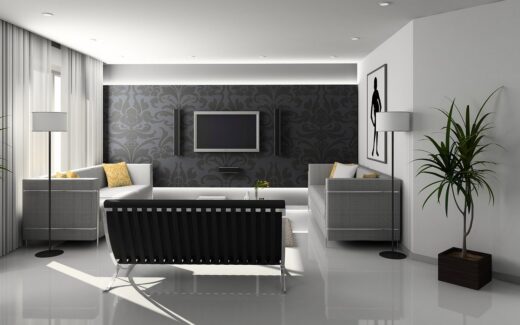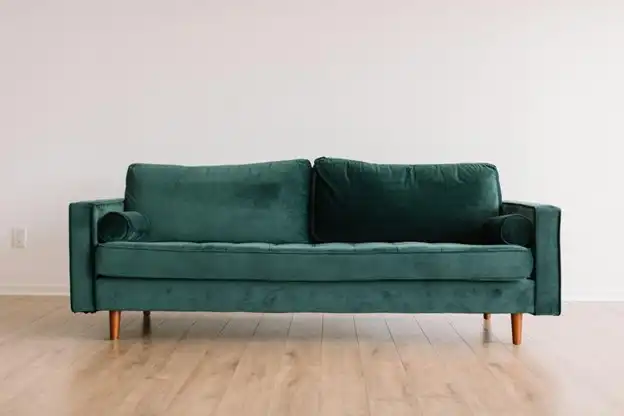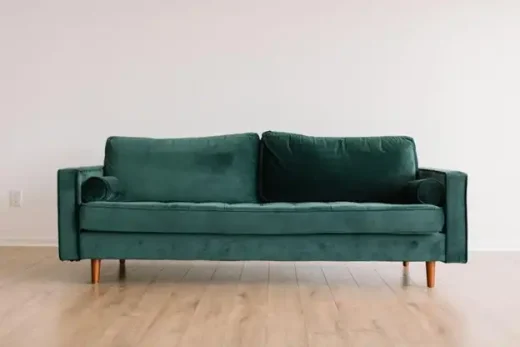How to incorporate minimalism into architecture, Property furniture, Home interior design style
How to Incorporate Minimalism into Your Architectural Projects
3 September 2024
Minimalism is more than a design aesthetic; it’s a way of life. Rooted in simplicity and functionality, minimalist architecture can transform spaces into serene environments that promote mental clarity and well-being.
Inspired by Japanese Zen philosophy, this approach incorporates clean lines, open spaces, and essential elements, creating visually pleasing and highly functional designs.
Let’s explore how you can incorporate minimalism into your architectural projects effectively.
Understanding Minimalist Principles
Minimalism in architecture involves focusing on what’s essential and eliminating what isn’t. This principle is not just about reducing clutter but achieving a design purity that highlights functionality and form.
- Simplicity in Design: Clean lines and open floor plans are fundamental, eliminating visual clutter and emphasizing the functionality of each space. This can be seen in the works of Tadao Ando and Ludwig Mies van der Rohe, who famously adopted the motto “Less is more.”
- Monochromatic Color Scheme: Utilizing a monochromatic palette helps create a cohesive environment. Shades of white, beige, and gray not only enhance the sense of space but reflect natural light, making rooms appear larger and more open.
- Efficient Use of Space: Every square inch in a minimalist design is considered. Integrating built-in furniture maintains clean lines and saves space. Multifunctional areas and clever storage solutions are key to keeping spaces uncluttered.
- Natural Light Maximization: Large, unadorned windows blur the boundaries between outdoors and indoors. Natural light not only illuminates spaces but connects interior environments to the natural landscape, promoting a sense of calm and openness.
Incorporating metal art furniture can also enhance the minimalist aesthetic. By choosing pieces with clean lines and subtle elegance, you can maintain the uncluttered look while adding a touch of sophistication. These furniture pieces blend seamlessly with the minimalist ethos, offering both form and function without overwhelming the space.
Benefits of Minimalism
Incorporating minimalism into your design projects offers numerous advantages, from psychological benefits to economic and environmental gains.
- Functional Efficiency: Minimalist architecture enhances the usability of living spaces. Every element has a purpose, and smart storage solutions keep spaces open and uncluttered, facilitating easier maintenance.
- Psychological Peace: The decluttered and harmonious design promotes mental clarity and reduces stress, offering a sanctuary from the chaotic pace of modern life. Natural light further boosts mood and productivity.
- Economic Savings: By focusing on simplicity, construction costs can be reduced. This efficient use of materials and natural light leads to energy savings, lowering utility bills.
- Environmental Sustainability: Minimalist architecture often uses eco-friendly materials and designs that leverage natural climate control, minimizing environmental impact and promoting sustainability.
Challenges and Solutions in Minimalist Design
Implementing minimalist design isn’t without its challenges. It requires a delicate balance to maintain simplicity without sacrificing comfort and functionality.
- Overcoming Sterility: Minimalist spaces can feel too sterile or impersonal. Introducing natural materials like wood and stone, and incorporating textures and soft furnishings, can add warmth without cluttering the space.
- Maintaining Practicality: Adequate storage is crucial. While minimalist designs aim to maximize space, they must be practical for daily living. Ensuring sufficient and clever storage solutions is essential to balance minimal aesthetics with functionality.
- Design Versatility: Custom solutions often needed in minimalist design can increase project complexity and cost. Innovative use of space and materials is required to make designs adaptable and versatile.
Notable Examples of Minimalist Architecture
Drawing inspiration from iconic minimalist projects can provide valuable lessons and ideas for your designs.
- The Glass House by Philip Johnson: A rectangular form with transparent walls and an open interior, maximizing space and seamlessly integrating with the landscape.
- Villa Savoye by Le Corbusier: Featuring functional roof gardens, strip windows, and supportive pilotis, this design merges aesthetics with practical functionality.
- Farnsworth House by Ludwig Mies van der Rohe: Showcases an open, wall-free interior with floor-to-ceiling glass panels, illustrating the minimalist prioritization of space and light.
- Church of Light by Tadao Ando: A stark concrete structure with a cruciform slit allowing light to penetrate the interior, demonstrating the minimalist manipulation of natural elements.
Embracing Minimalism in Your Projects
Integrating minimalist principles into your architectural projects requires more than adopting a design style. It involves a mindset shift towards valuing quality over quantity and simplicity over complexity.
- Engage with the Essentials: Focus on incorporating essential elements and stripping away unnecessary details. Prioritize functionality without compromising aesthetics.
- Adopt Sustainable Practices: Utilize eco-friendly materials and leverage natural light and ventilation to minimize the environmental footprint.
- Personalize Wisely: Balance the minimalism with homely touches that reflect the inhabitants’ personalities for a warmer and inviting space.
- Plan for Efficiency: Ensure every design decision enhances space usability and includes smart storage solutions to maintain the clean, uncluttered feel of minimalist architecture.
Conclusion
Incorporating minimalism into your architectural projects can create spaces that are serene, functional, and aesthetically pleasing. By understanding and applying minimalist principles, overcoming design challenges, and drawing inspiration from notable examples, you can transform physical spaces into environments that enhance the lives of those who inhabit them. Embrace this approach to let simplicity and functionality guide your designs, offering spaces that not only look good but feel good too.
Minimalist architecture is a powerful tool for creating environments that promote mental clarity and well-being. By focusing on essential elements and embracing simplicity, you can transform any space into a serene and efficient environment, benefiting both the occupants and the environment. Remember, minimalism is not just a design choice—it’s a lifestyle that values quality, function, and sustainability.
Comments on this guide to how to incorporate minimalism into architecture article are welcome.
Home Sofas
Home Sofa Furniture
Choosing right sofa for your new apartment
How to deep clean your sofa and give it a fresh look
Hunt for the best sofa furniture
Furniture
Furniture Design Posts
Vital rules of bedroom furniture placement tips

Iconic Collaborations in Luxury Furniture
8 tips to help you buy new furniture for your home
Buildings
Residential Property Articles
Comments / photos for the How to incorporate minimalism into architecture page welcome






